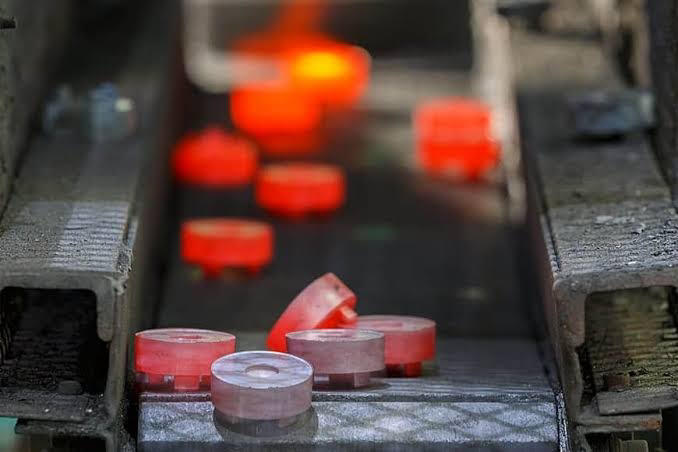HEAT TREATMENT OF STEEL
One of the very important characteristics of steel is the ability to alter the microstructure through heat treatment. As seen in the previous sections, many different microstructural constituents can be produced. Each constituent imparts a particular set of properties to the final product.
The common types of heat treatment are listed below:
Annealing (Full Annealing) One of the most common heat treatments for steel is anneal-
ing. It is used to soften steel and to improve ductility. In this process, the steel is
heated into the lower regions of the austenite-phase field and slow cooled to room
temperature. The resulting microstructure consists of coarse ferrite or coarse ferrite
plus pearlite, depending upon carbon and alloy content of the steel.
Normalizing Steel is normalized by heating into the austenite-phase field at temperatures
somewhat higher than those used by annealing followed by air cooling. Many steels
are normalized to establish a uniform ferrite plus pearlite microstructure and a uniform
grain size.
Spheroidizing To produce a steel in its softest possible condition, it is usually spheroidized
by heating just above or just below the eutectoid temperature of 727∘C and holding
at that temperature for an extended time. This process breaks down lamellar pearlite
into small spheroids of cementite in a continuous matrix of ferrite.
To obtain a very uniform dispersion of cementite spheroids, the starting microstructure is usually martensite. This is because carbon is more uniformly distributed in
martensite than in lamellar pearlite. The cementite lamella must first dissolve and
then redistribute the carbon as spheroids whereas the cementite spheroids can form
directly from martensite.
Process Annealing (Recrystallization Annealing)
Process annealing takes place at temperatures just below the eutectoid temperature of 727∘C. This treatment is applied to
low-carbon, cold-rolled sheet steels to restore ductility. In aluminum-killed steels, the
recrystallized ferrite will have an ideal crystallographic texture (preferred orientation)
for deep drawing into complex shapes such as oil filter cans and compressor housings.
Crystallographic texture is produced by developing a preferred orientation of the fer-
rite grains, i.e., the crystal axes of the ferrite grains are oriented in a preferred rather
than random orientation.
Stress Relieving
Steel products with residual stresses can be heated to temperatures
approaching the eutectoid transformation temperature of 727∘C to relieve the stress.
Quenching
To produce the higher strength constituents of bainite and martensite, the steel
must be heated into the austenite-phase field and rapidly cooled by quenching in oil
or water. High-strength, low-alloy steels are produced by this process followed by
tempering. It must be noted that employing microalloying additions such as Nb, V,
and Ti can also produce HSLA steels. These microalloyed steels obtain their strength
by thermomechanical treatment rather than heat treatment.
Tempering
When quenched steels (martensitic steel) are tempered by heating to temperatures approaching the eutectoid temperature of 727∘C, the dissolved carbon in the
martensite forms cementite particles, and the steels become more ductile. Quenching
and tempering are used in a variety of steel products to obtain desired combinations
of strength and toughness


Comments
Post a Comment
If you have any doubts let me know.